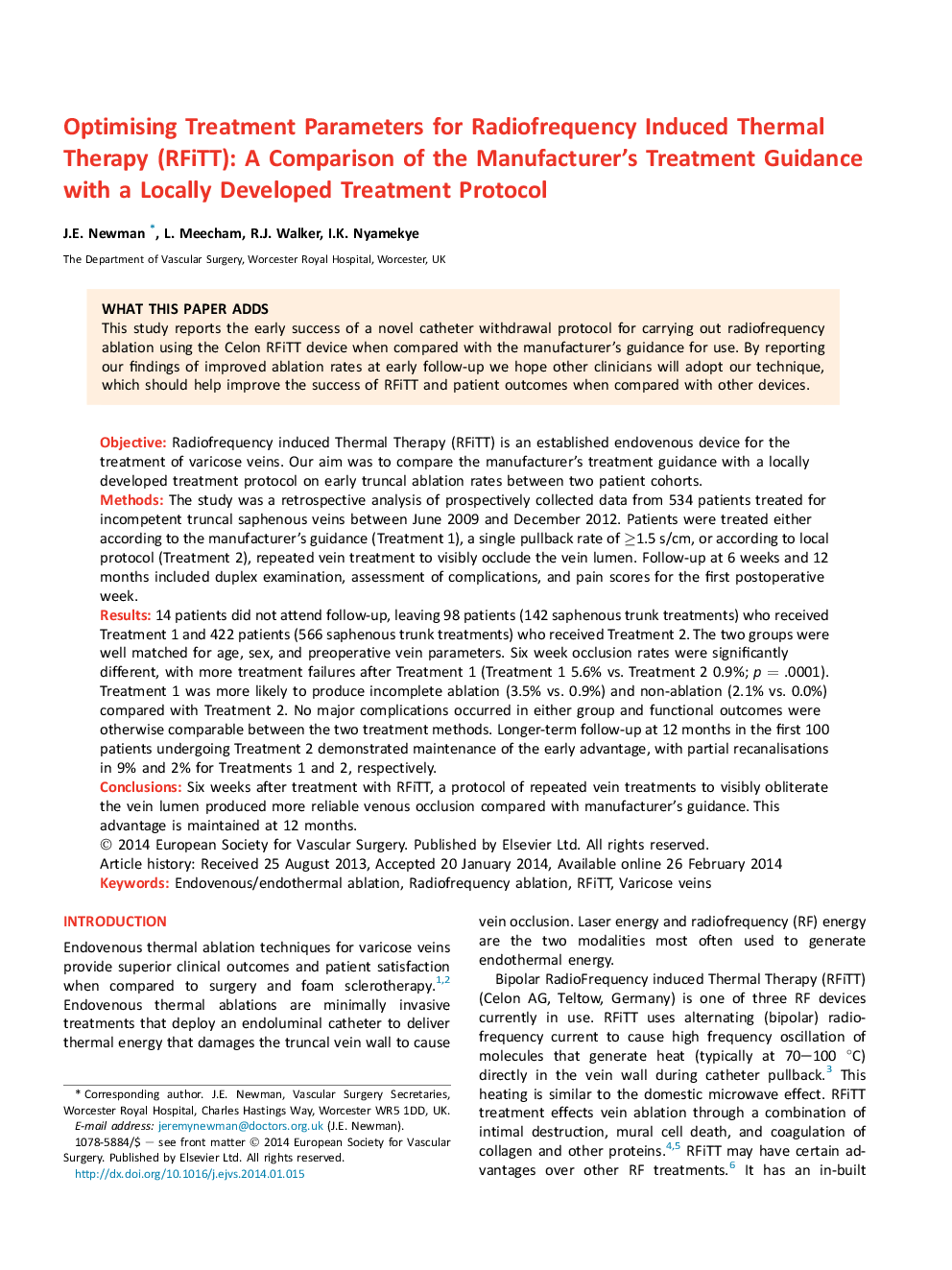| کد مقاله | کد نشریه | سال انتشار | مقاله انگلیسی | نسخه تمام متن |
|---|---|---|---|---|
| 5958325 | 1575453 | 2014 | 6 صفحه PDF | دانلود رایگان |

ObjectiveRadiofrequency induced Thermal Therapy (RFiTT) is an established endovenous device for the treatment of varicose veins. Our aim was to compare the manufacturer's treatment guidance with a locally developed treatment protocol on early truncal ablation rates between two patient cohorts.MethodsThe study was a retrospective analysis of prospectively collected data from 534 patients treated for incompetent truncal saphenous veins between June 2009 and December 2012. Patients were treated either according to the manufacturer's guidance (Treatment 1), a single pullback rate of â¥1.5 s/cm, or according to local protocol (Treatment 2), repeated vein treatment to visibly occlude the vein lumen. Follow-up at 6 weeks and 12 months included duplex examination, assessment of complications, and pain scores for the first postoperative week.Results14 patients did not attend follow-up, leaving 98 patients (142 saphenous trunk treatments) who received Treatment 1 and 422 patients (566 saphenous trunk treatments) who received Treatment 2. The two groups were well matched for age, sex, and preoperative vein parameters. Six week occlusion rates were significantly different, with more treatment failures after Treatment 1 (Treatment 1 5.6% vs. Treatment 2 0.9%; p = .0001). Treatment 1 was more likely to produce incomplete ablation (3.5% vs. 0.9%) and non-ablation (2.1% vs. 0.0%) compared with Treatment 2. No major complications occurred in either group and functional outcomes were otherwise comparable between the two treatment methods. Longer-term follow-up at 12 months in the first 100 patients undergoing Treatment 2 demonstrated maintenance of the early advantage, with partial recanalisations in 9% and 2% for Treatments 1 and 2, respectively.ConclusionsSix weeks after treatment with RFiTT, a protocol of repeated vein treatments to visibly obliterate the vein lumen produced more reliable venous occlusion compared with manufacturer's guidance. This advantage is maintained at 12 months.
Journal: European Journal of Vascular and Endovascular Surgery - Volume 47, Issue 6, June 2014, Pages 664-669